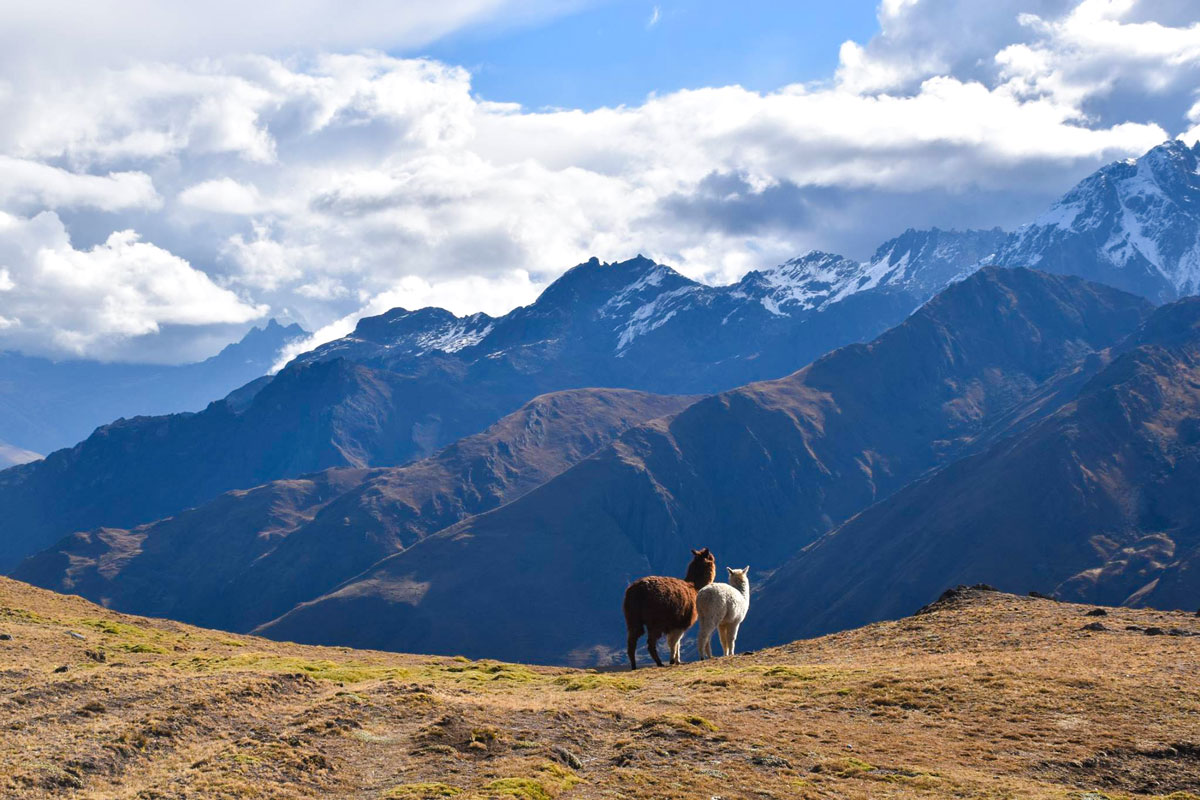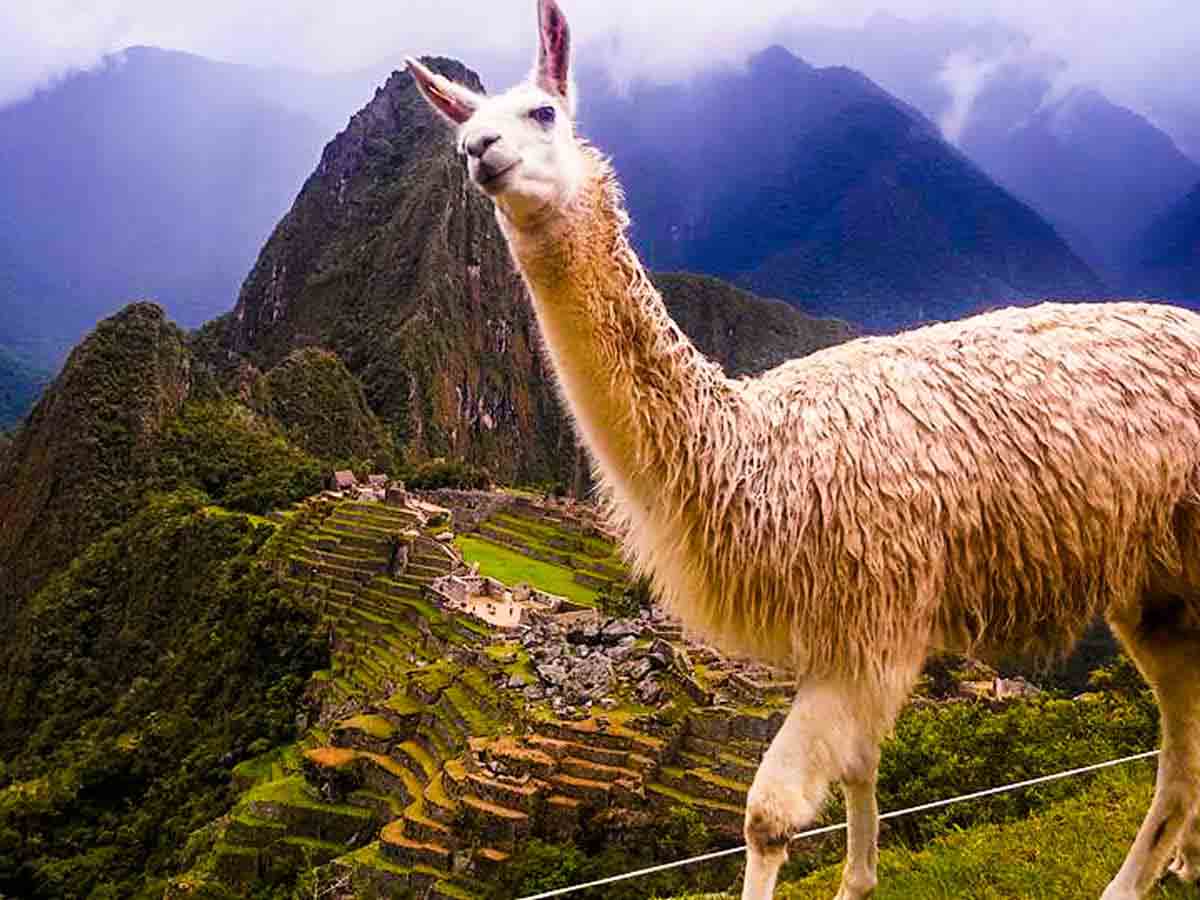
Machu Picchu is an Inca city surrounded by temples, platforms and water channels, built on top of a mountain. Its construction was built with large blocks of stone joined together, without the use of amalgam. At the moment it is considered cultural patrimony of the humanity when being recognized like important political center, religious and administrative of the Incaic time.
It is located northwest of Cusco, 129 kilometers above the Urubamba River (hence the name of the Vilcanota River), in the mountains of Vilcabamba. Its altitude is about 2380 m.s.n.m. The citadel of Machu Picchu is one of the most important archaeological sites in the world and is the main destination of Peru. Few works done by man show as much harmony with nature as the citadel of Machu Picchu shows us and the 33 archaeological groups that are united by the Inca Trail.
The archaeological complex is located at the top of the mountain, Machu Picchu (in Quechua means old mountain or important mountain) which gives the name to the citadel and the impressive landscape that we have all seen. In front of this, the incredible mountain of Wayna Picchu appears ("young mountain") in whose top and slopes some archaeological remains are located. Both summits limit with the mighty Urubamba River that runs towards the east, 400 meters below the citadel.
The natural home of the llama is South America. In the golden age of the Inca Empire, the llama was the most important livestock. Without it, human civilization in the high Andes probably would not have been possible. The llama gave the people everything they needed: wool, meat, and reliable, undemanding transportation. In the time of the Incas, there were different breeds of llamas.
In recent years, one trending animal has followed the next. After foxes, unicorns, flamingos and owls, the llama now smiles at us from all social media channels. Cute, fluffy, sociable and calm, these animals are sure to win hearts while being extremely helpful, and taking a selfie with a llama is now a must on any visit to Machu Picchu.
Every culture has something more sacred: the Incas did it with the llamas. They immortalized the animals in a hidden city 3,000 meters high in the Andes, not far from the famous Machu Picchu. Archaeologists discovered: The entire Platafforms complex to a constellation of LLama. "Choquequirao"
But one question worries travelers and those who stayed at home at the latest when looking at the photos: How can animal species be distinguished?
RELATED: WHAT'S THE DIFFERENCE BETWEEN A LLAMA AND AN ALPACA

Since Hiram Bingham "Re-Discover" Machu Picchu in 1911. the site has captured the imagination of much of the world and is, perhaps, the single feature which people commonly identify with Peru.
Machu Picchu was not really The lost City of the Incas because most of the indian residents of the zone knew about the site when Bingham arrived to "Discover" it, nor was it the site of the Incas last refuge before the advance of the Spanish armies. In fact, the last Inca rulers probably left Machu Picchu once the spanish gained control of the upper Urubamba River.
Machu Picchu was a flourishing ceremonial and agricultural site, probably the gateway to the jungle marches of the Empire. The central buildings were made with the polished stoneworks of the Cusco Imperial style, though the site was probably occupied well before the Incas started their expansion. It was closely associated with the earth cult revolving around the Coca leaf, which was a privilege of the Inca Royal family and priests. Coca is still cosumed today by the Andean peasant. It takes the bite out of hunger and fatigue, but has more important relevance on social and magical levels.
The ruins staircases, terraces, temples, palaces, towers, fountains, the famous Intiwatana and the Museo de Sitio below the ruins require at least one day, some say two. The mountain overlooking the site, Huayna Picchu, has steps to the top for a superlative view of the whole ruins, but it is not made for those who get giddy, the walk up takes about one hour but the steps are dangerous after bad weather.

RELATED: MACHU PICCHU HISTORY
The easiest way to get to Machu Picchu on your own, is to take the daily train that leaves early in the morning, climbs onto a broad of an Andean plateau, and then descends into the Urubamba valley.
You arrive at Machu Picchu station before noon. It takes about two hours to stroll through the ruins and climb to a prominence above the citadel for a panoramic view.
After a tired ascent in a bus along zig-zag turns up the steep cliffs, the first glimpse of the citadel is breathtaking. Machu Picchu does not owe its reptutation to colossal dimensions. No single building is more than two stores high, though some structures take advantage of the slope to build up complexes in tiers. Rather, it is a beautiful jewel in an equally beautiful setting, perfectly propotioned to the contours of the mountain, at time appearing to be suspended in the mist, a shrouded appartion out of the past.
Those lucky enough to spend the night at the comfortably Santuray Lodge hotel (Booking should be made well in advance) on top of Machu Picchu, there is a special magic to the ruins under starlight or the moon. Equally impressive is the view of the citadel at dawn. For the most athletic, a climb up Huayna Picchu, the towering peak facing the citadel or up Inti Punku, the gateway of the Inca Trail at 2600 meters above the sea level can provide unique panoramic views. Both of these trips take about two hours each, with regular rest periods, so they are difficult to fit into the routine day trip to Machu Picchu.
The hardest way to get to Machu Picchu, but probably the most rewarding, is to make the Inca Trail starting from Km 82 or km 88 of the railroad to Machu Picchu. It takes three to four days and should not be attempted by the unprepared or short-winded. The 4 days Inca trail passes through or near many Inca ruins which can rival Machu Picchu in some respects. The scenery is impressive. Live this amazing experience and make your Inca trail Book 2022 now!
The classic Inca route is famous for the variety of its topography and its ecosystems, but the varied selection of the Salkantay Trek is even more impressive.
You can buy the train tickets in the different points of sale of Peru Rail, as well as it can be done through the Web page www.perurail.com. Ticket sales are subject to space availability.
You can buy tickets at different points of service or through the website www.incarail.com
RELATED: TRAIN TO MACHU PICCHU
There are buses that take people from Machu Picchu to the Sanctuary from 05:30 hours, every 15 minutes. This frequency is given until 3:30 p.m. and return buses leave between 6:30 and 5:30 p.m. The travel time is approximately 25 minutes.
Round Trip |
One way |
|
Adult |
USD 24 | USD 12 |
Child |
USD 12 | USD 7 |
Entrance tickets for any of the routes are not sold at the access control. In the case of Huayna Picchu, you will not be able to enter this area without the corresponding ticket. The maximum capacity of entrance is of 400 visitors per day, divided in two groups of 200 people according to the indicated schedule. For the case of the mountain Machupicchu 800 visitors in two schedules of 400 people.
Make the purchase of the Machu Picchu tickets 2024 in advance, check the availability of spaces via internet
Maximum capacity of visitors per day:
On June 24, as part of the celebrations of Cusco is celebrated the "Inti Raymi 2024", in this emulates the most important celebration for the civilization of the Incas. During this day the Incas celebrated what we know today as the winter solstice, the day on which the Sun (the main god of the Inca civilization) reaches its greatest height. This ancestral festival begins in the Qoricancha or temple of sun and ends in the archaeological site of Sacsayhuaman. This celebration full of color, is one of the best things you can do during your trip to Machu Picchu, a city dedicated entirely to the Sun.
RELARED: THE INCA NAME FOR THEIR EMPIRE, TAHUANTINSUYU, MEANS WHAT?
